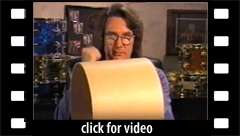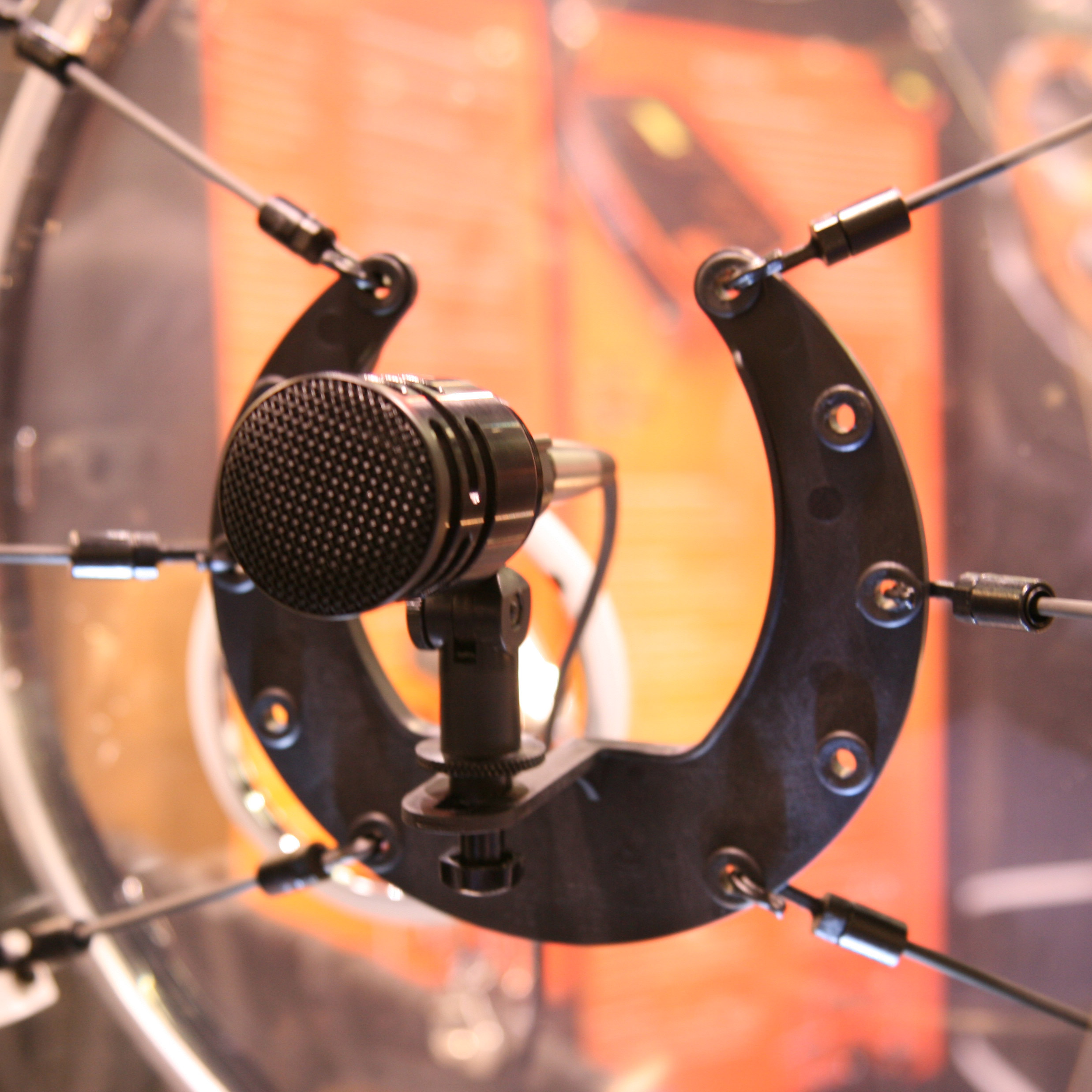
John Good on Timbre Matching DW Drums
Sunday, June 28th, 2009 | by matthew mcglynn
I mentioned in January that I’d seen a video of DW’s John Good demonstrating the concept of “Timbre Matching,” in which complementary drum shells are selected for a particular kit based on the fundamental note of the wood shell. In the video, Good shows a 12'' and a 14'' shell that sound exactly the same. You can imagine that trying to tune those two shells to an appropriate interval would be unsatisfying.
 I dug out the video and made a clip of the relevant section. The video was called The American Dream II; it was a promo piece for DW from 1997. This clip has cameos by Neil Peart, Mick Fleetwood, and a couple other drummers.
I dug out the video and made a clip of the relevant section. The video was called The American Dream II; it was a promo piece for DW from 1997. This clip has cameos by Neil Peart, Mick Fleetwood, and a couple other drummers.
John Good: When selecting shells, it’s really important — of course — to listen to the note of the shell. But you have to bear in mind the intervalic relationship between the shells to create one instrument.
For example this 12 inch shell right here has this note. This 14” shell right here has the same note. This is the 14 inch shell that should have gone with that 12. Now we’re creating an intervalic relationship. And that’s what Timbre Matching is all about.
What does this all mean to a drummer. How can he access what I’m trying to do with these shells? The way he accesses what we intended the shells to do is by looking inside the drum and seeing that the note of the shell has been stamped on the inside. Now this is your reference point for tuning. Then you’re going to have the best vibration and the best sweet spot a drum can deliver.
If you decide that you hear that drum lower than the note that’s stamped in it, then by all means tune it lower. But now you’re thinking about the note in the shell.
Scott Crago: The idea of putting your fingers on a drum and tapping it and hearing a note, and going down to the next size and making it chromatically in a third, and tapping that. It made so much sense to me. Why didn’t anybody think of this before?
Neil Peart: And I also found myself very much in synch with John Good’s thinking about a shell itself having a note that it wants to produce. And when he taps the shell and stamps the inside of that shell with a note, I too believe that the best thing you can do is try to tune the heads on that drum to that same fundamental note and you’re going to get the maximum amount of resonance and tone from that drum. So I got hold of a set of DW drums and used them through the preproduction process and then into the recording of the Test for Echo album, and was very much pleased with how they worked in the studio, and the tonality and resonance that they have, and the sympathetic relationship among the different pitches that John Good carefully chooses.
Randy Guss: The whole idea of timbre matching to me sounds like science fiction, almost, that someone’s sitting out there — I’ve seen him do it. I’ve seen John Good out there, knocking on wood and listening and things like that. What you know you’re going to get is a personalized kit that’s cohesive, that’s going to fit together. And you know that the guy with the ears at this company is going to be putting that kit together for you. They do it for me, they do it for Mick Fleetwood, they do it for anyone who buys a DW kit.
John Good: When we’re Timbre Matching shells, not only am I looking for the specific sound of the drum — yes, that’s the most important thing, to create an intervalic relationship for the whole drum set. But I’m also looking at the wood tones, the color tones, the grain patterns. There’s a lot involved to create a kit that really looks like it wanted to be one drum set.
Mick Fleetwood: You can tell, every time I’ve been here, they’re aware that this is a piece that’s going from here, and there’s a real sense of pride, and a sense of family in what goes on here. It’s not just punched out, and I think by way of saying that that it’s a real, in the sense of the word of what a real instrument is. It’s special. And every kit that’s here has its own character, and people have built that up. When a kit leaves here, it is being put together because those drums are supposed to be together.
Tags: dw drums, john good, mick fleetwood, neil peart, scott crago
Posted in Drums, Video | 2 Comments »


GABE
January 22nd, 2012 at 11:55 am
can i use a chromatic tuner to tune my drums,if so want brand would work best?
matthew mcglynn
January 22nd, 2012 at 11:16 pm
Gabe, I’ve experimented with that, but never had any luck. The note of the drum does not sustain long enough for the tuner to register it.
I strongly recommend the Drum Dial. Here’s my review of it from a few years back:
http://debris.com/journal/1340
I believe the company has a new digital version, just released recently.